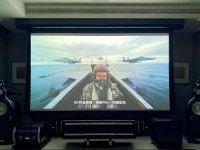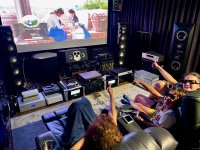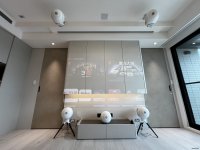|
|

樓主 |
發表於 2009-3-22 11:15:24
|
顯示全部樓層
VideosAltitude: 9,555 m
Camera tilted up
Notice how much turbulence there is at this altitude
MVI_0280
Altitude: 14,987 m
Camera tilted sideways
Capsule was spinning during the flight as anticipated, not sure what's the best way to fix it
MVI_0328
Altitude: 22,085 m
Camera tilted sideways
MVI_0397
Altitude: 29,994 m
Camera tilted up
Notice how big the balloon is at this altitude
MVI_0464
Altitude: 30,489 m
Camera tilted sideways
This is the best video at high altitude
MVI_0466
Altitude: 15,186 m
Camera tilted up
Parachute is open and there is a pretty big piece left of the popped balloon
MVI_0510
Altitude: 9,391 m
Camera tilted up
Parachute is seen closing and opening and tangling
MVI_0533
Altitude: 3,896 m
Camera tilted up
Parachute is seen tangling
MVI_0556
Altitude: 2,853 m
Camera tilted sideways
Passing through clouds, water condensate is seen forming on camera lens
MVI_0558
Panoramas 360 degree panorama. Auto-stitched from over 100 video frames using Kolor Autopano Pro. 360 degree panorama. Auto-stitched from over 100 video frames using Kolor Autopano Pro.
 Stereographic panorama. Auto-stitched from over 100 video frames using Kolor Autopano Pro. Stereographic panorama. Auto-stitched from over 100 video frames using Kolor Autopano Pro.
Sensors This graphs shows how the altitude changed with mission time. Since GPS module stopped working above 24 km, an exponential projection was used to calculate real altitude from barometric altitude. This graphs shows how the altitude changed with mission time. Since GPS module stopped working above 24 km, an exponential projection was used to calculate real altitude from barometric altitude.
 This graphs shows how the barometric pressure changed with mission time. Pressure was very close to zero when the balloon reached 30km. This graphs shows how the barometric pressure changed with mission time. Pressure was very close to zero when the balloon reached 30km.
 This graphs shows how external temperature changed with mission time. The middle part of the graph shows temperature rising in the tropopause. This is caused by poor heat conductivity of the thin atmosphere. As the sun heats up the object, it cannot lose heat quickly enough. This graphs shows how external temperature changed with mission time. The middle part of the graph shows temperature rising in the tropopause. This is caused by poor heat conductivity of the thin atmosphere. As the sun heats up the object, it cannot lose heat quickly enough.
ConclusionThis launch was very successful. Things to improve for next one: reflash SiRF III chip so that it works at an altitude over 24km, use yagi antenna instead of omni-directional antenna, improve parachute system.
Contrary to this flight, parachute worked well in Flight 1. Impact speed was 27km/h and a witness described the landing being smooth. But with this flight, Flight 2, the balloon didn't burst as cleanly as in Flight 1, so there was a higher chance for it to tangle. I think I just need to add a tensioner (i.e. a ring) underneath the parachute for the next flight to fix this problem.
Special thanks to:
My family (my dad, Ivan, Alexander and Kate), Alex Kennberg and Richard for launch support operations
#highaltitude on FreeNode for advice regarding balloon inflation
Next flight should be in summer 2008. I plan to fix the radio systems so that uninterrupted contact is maintained.
— Alexei Karpenko
DataMany more pictures and videos were captured:
Pictures
Videos
Flight trajectory for Google Earth:
 halo2-pictures.kmz (with embedded pictures) halo2-pictures.kmz (with embedded pictures)
 halo2-videos.kmz (with embedded videos) halo2-videos.kmz (with embedded videos)
Excel Files:
burst.xls — balloon lift prediction (thanks to Steve Randall)
analysis.xls — flight analysis (data, graphs, etc...)
Programs:
GM862-GPS code with 24km crash prevention (original code by nick84)
FAQQ:Why only a 3 megapixel camera?
A:Megapixels are a myth. More than 3 megapixels do not make sense for a camera sensor of that size and would actually be worse because smaller area per pixel results in more noise and fewer color levels. Now with a DSLR, more is better. But for this project a 3 megapixel camera is perfect and much better than a >=5 megapixel one. It would have been nice to do hi-def video and a separate video camera might be an idea for the next launch.
Q:Why not make the parachute system unnecesarily complex?
A:This parachute system has been tested on Flight 1 and worked fine. The problem can be mitigated by a tensioner ring and by a longer distance between balloon and parachute.
Q:Isn't it a danger for manned aircraft?
A:Even though the chance of collision is very small, there was an aluminium foil inside the capsule for radar reflection. Control towers should have been able to track it. As for legality, as far as I can tell, it's permitted for that weight without requirements to notify any authority.
Q:Haven't this been done before?
A:Yes, like I said it's an emerging hobby which is great to see. I am very impressed by other launches some of which are more complex than mine. I have been following other people's progress and have still alot to learn. There are a couple of high altitude clubs and societies that you can join. Initially most launches were done by licensed radio amateurs, but now license-free solutions are readily available (at least in Canada/USA). I tried to do something unique, so a tilted camera taking both videos and pictures was used.
Q:How much did it cost?
A:The system that is presented is a little over-engineered for historical reasons as well as for future expansion and test purposes. It's possible to build a system for $500 with just a cellphone link and a microcontroller, but make sure that coverage is good where you intend to launch and use a good cellphone antenna. |
評分
-
查看全部評分
|




